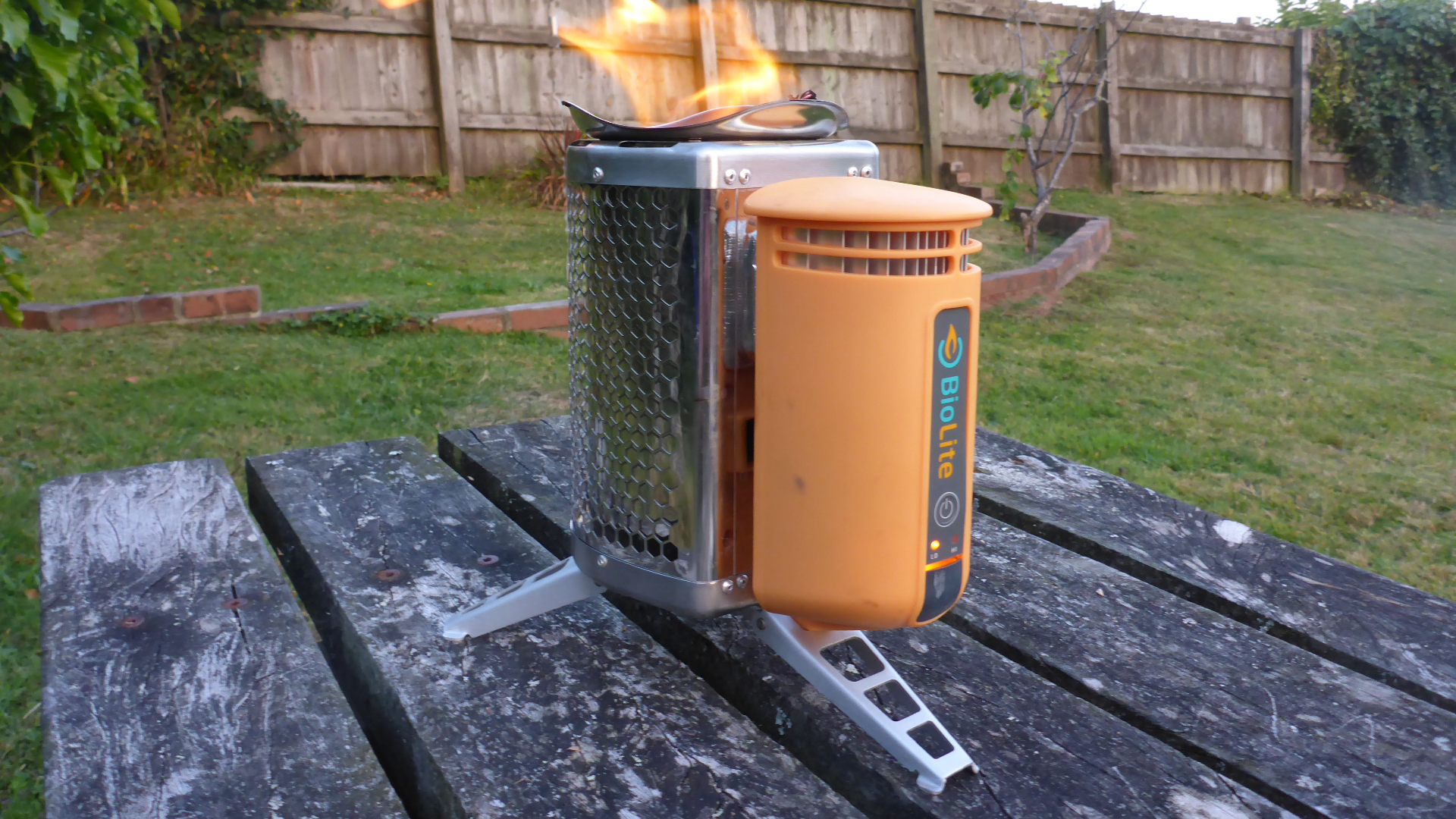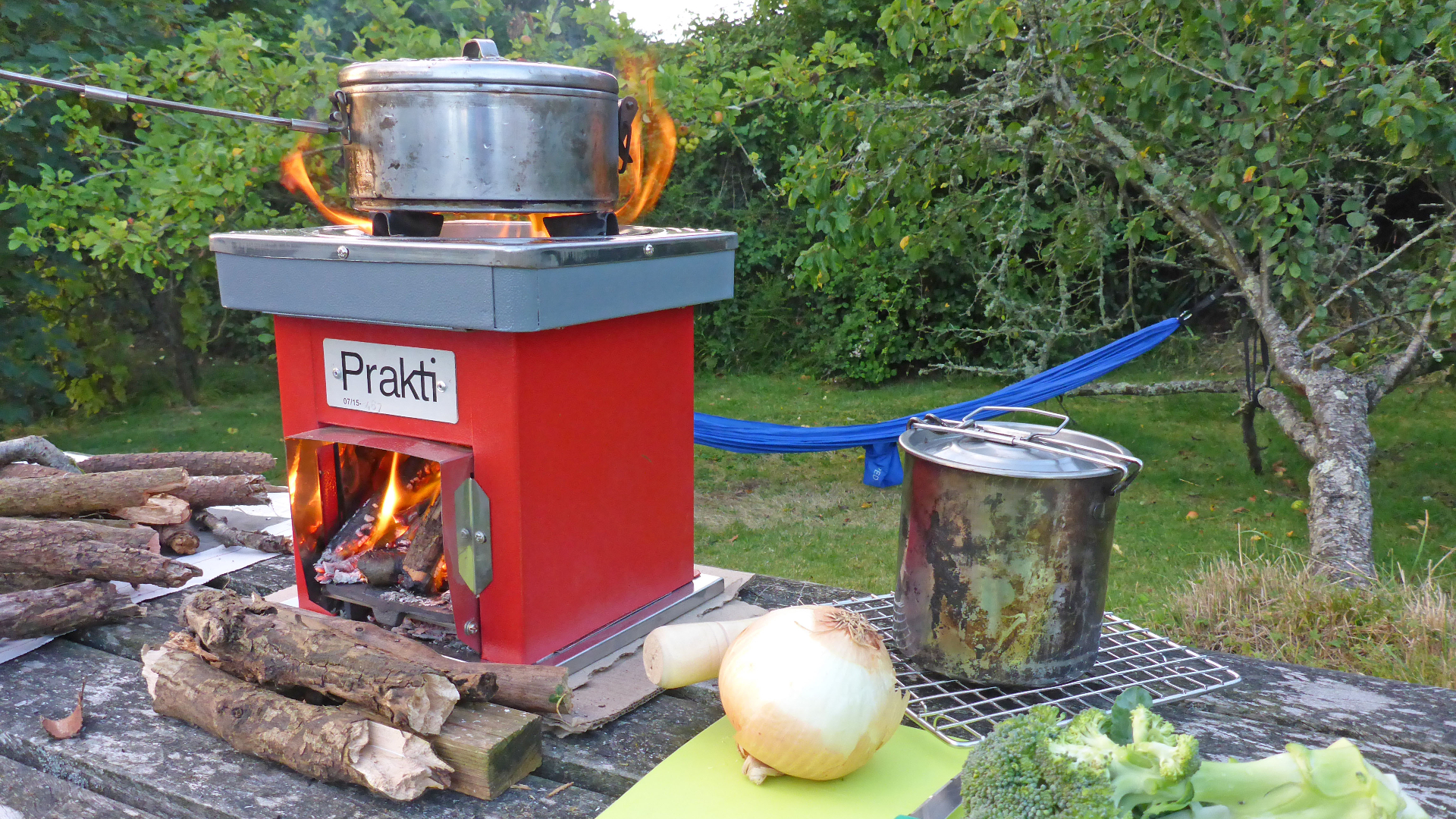How to use a wood-burning stove to get the most out of your meals on camp
Cooking over an open flame sounds simple, but knowing how to use a wood-burning stove can significantly improve your results

If you are looking for an alternative to a gas-canister or liquid-fuel stove, or just want to experiment with a few ways to cook on the side of the trail or entertain friends, the best wood-burning stoves are a very good option.
Neater, quicker and more efficient than building a full fire just to make a hot meal, wood-burning stoves allow you cook great flame-warmed food in campsites and other outdoor scenarios. Once you know how to use a wood-burning stove, they're often more fun to use than then modern camping stoves, gas burners for backpacking and car-camping grills, and the fuel is completely free.
- What is a wood-burning stove? We've got the answers
- Whether you want wood, gas or another fuel type, here's how to choose a camping stove
- The best camping utensils to turn a campsite into a kitchen
Wood-burning stoves are primarily offered in two product categories: small, packable, lightweight hiking versions – for the backpackers – and large group-size stoves, fit for feeding an army, which come into their own during car camping escapades and family picnics.
For both, the concept is pretty basic: you collect bio fuel – starting with kindle (dry grass, twigs) and grading up to slightly thicker pieces of wood or pine cones – and get a fire going. Then you cook on it. Simple, right?
It is, but there are a few things you should bear in mind while using wood-burning stoves, to get the best out of the gear, and to protect yourself and the natural environment.
Here's how to use a wood-burning stove...
Cooking efficiency
One of the key benefits of gas-canister or liquid-fuel stoves is the ability to control the flame. With most wood-burning stoves you can still exert that control, but you do so by monitoring the amount of fuel being burned. Once the fire is started and burning well, adding small amounts of sticks and twigs will keep the contents of cooking pots hot – so a decent sized gap or feeding hole between the pot and the fire pit is desirable. For boiling a single pot of water, small wood-burning camp stoves are a great option.
All the latest inspiration, tips and guides to help you plan your next Advnture!
Boil times
Boil times, often used to compare performance of canister or liquid fuel stoves, don’t really apply with wood-burning camping stoves. With the most effective wood-burning stoves, you start the fire, add the fuel and boiling water is just a few minutes away – the Kelly Kettle is a great example of how this can be done super efficiently with a well-designed stove. Fire pits work best for grilling food, not boiling water in pots.
Single burner
Wood-burning stoves designed for backpackers are limited to a single burner for a small pot. Since many of the best camping meals start with boiling water, this works fine for backpackers, who won’t miss the more refined controls of canister and liquid fuel stoves to simmer or use low heat to cook.

Don’t get burned
Whether you’re looking using a compact backpacking stove or hefty fire pit – most of these wood-burning stoves are constructed of stainless steel, which is highly efficient in transferring heat. In simpler terms, these stoves get hot! Very hot. Add a pair of metal tongs and leather gloves to your cooking kit, keep young children well away from the surfaces and remind your friends to use caution when cooking.
Responsible use
Campers around the world have learned to practice ‘Leave No Trace’ principles, and that includes not burning down the habitat you have gone out to explore. If there is a ban on open fires in the place where you are camping, please respect it and don’t use a wood-burning stove.
After use
Once cooking is finished, the small fires in a wood-fueled stove burn down to ash that can be cleaned up easily, but be very careful where you dispose of hot ashes. Ideally wait until they are completely cool, or bury them safely in the dirt well away from anything that could catch fire.

Cleaning
Small wood-burning stoves need to be wiped down with a clean cloth to remove dirt and ash, but beyond that, small stoves require little more attention – just store them in the stuff sacks that usually come with purchase.
Cleaning larger wood-burning fire pit models is more complicated. Burning much larger pieces of wood or charcoal can leave layers of ash and charred wood. The larger wood-burning stoves need to left to cool and then cleaned of ash and unburned wood before being stored in sturdy gear bags.
A journalist specializing in outdoor recreation, Lou has covered product design innovations, participation trends and environmentally sustainable manufacturing for over 20 years. On the other hand, he’s had some less than successful outdoor adventures: once, completely spent after a hard day on the trail, he managed to set a vintage MSR Whisperlite stove ablaze before accidentally kicking the burning contraption into a lake. A published author, his book about invasive fish threatening the Great Lakes watershed will be published in 2021. craftedwords.com
